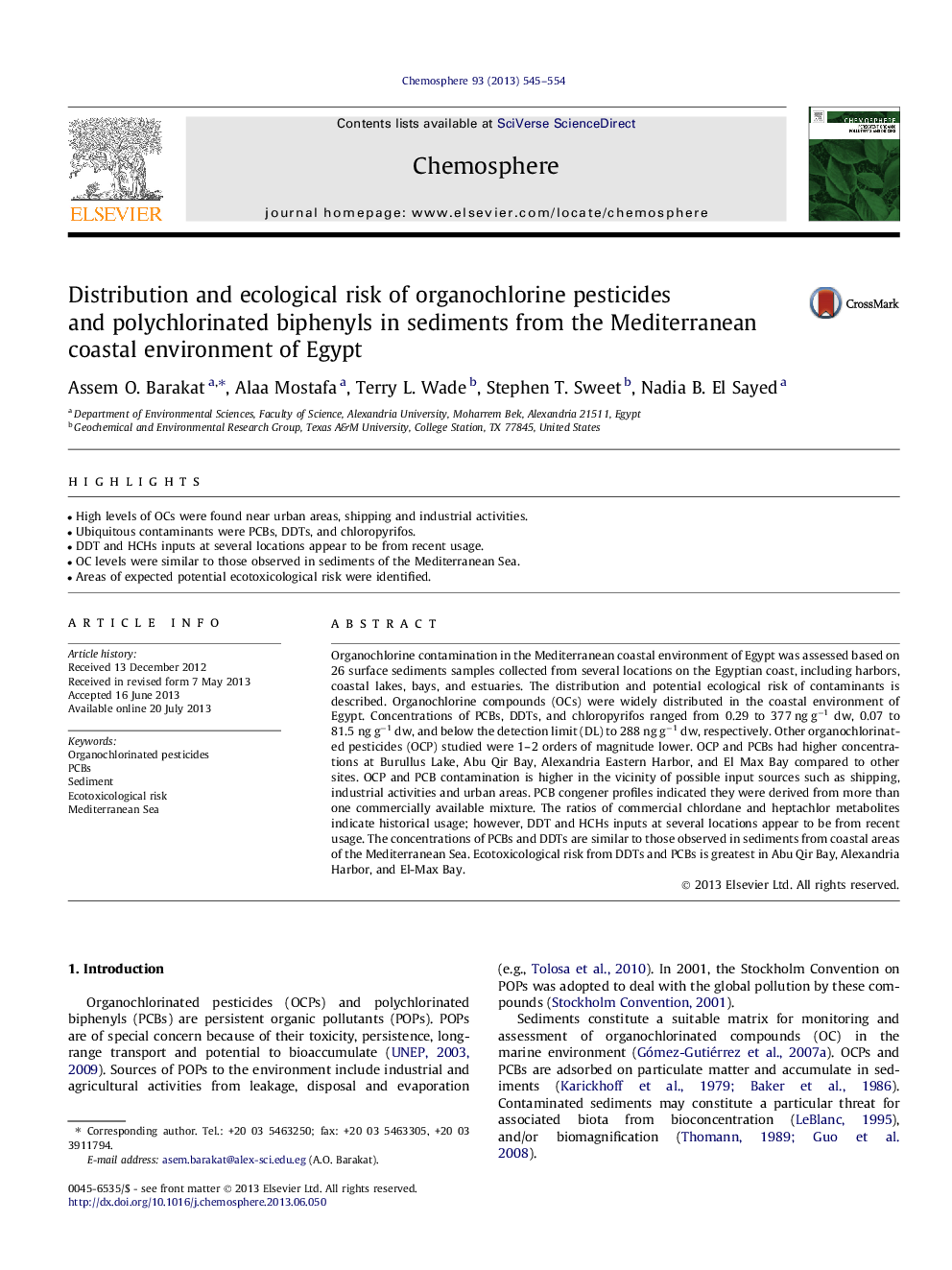| Article ID | Journal | Published Year | Pages | File Type |
|---|---|---|---|---|
| 4409169 | Chemosphere | 2013 | 10 Pages |
•High levels of OCs were found near urban areas, shipping and industrial activities.•Ubiquitous contaminants were PCBs, DDTs, and chloropyrifos.•DDT and HCHs inputs at several locations appear to be from recent usage.•OC levels were similar to those observed in sediments of the Mediterranean Sea.•Areas of expected potential ecotoxicological risk were identified.
Organochlorine contamination in the Mediterranean coastal environment of Egypt was assessed based on 26 surface sediments samples collected from several locations on the Egyptian coast, including harbors, coastal lakes, bays, and estuaries. The distribution and potential ecological risk of contaminants is described. Organochlorine compounds (OCs) were widely distributed in the coastal environment of Egypt. Concentrations of PCBs, DDTs, and chloropyrifos ranged from 0.29 to 377 ng g−1 dw, 0.07 to 81.5 ng g−1 dw, and below the detection limit (DL) to 288 ng g−1 dw, respectively. Other organochlorinated pesticides (OCP) studied were 1–2 orders of magnitude lower. OCP and PCBs had higher concentrations at Burullus Lake, Abu Qir Bay, Alexandria Eastern Harbor, and El Max Bay compared to other sites. OCP and PCB contamination is higher in the vicinity of possible input sources such as shipping, industrial activities and urban areas. PCB congener profiles indicated they were derived from more than one commercially available mixture. The ratios of commercial chlordane and heptachlor metabolites indicate historical usage; however, DDT and HCHs inputs at several locations appear to be from recent usage. The concentrations of PCBs and DDTs are similar to those observed in sediments from coastal areas of the Mediterranean Sea. Ecotoxicological risk from DDTs and PCBs is greatest in Abu Qir Bay, Alexandria Harbor, and El-Max Bay.
